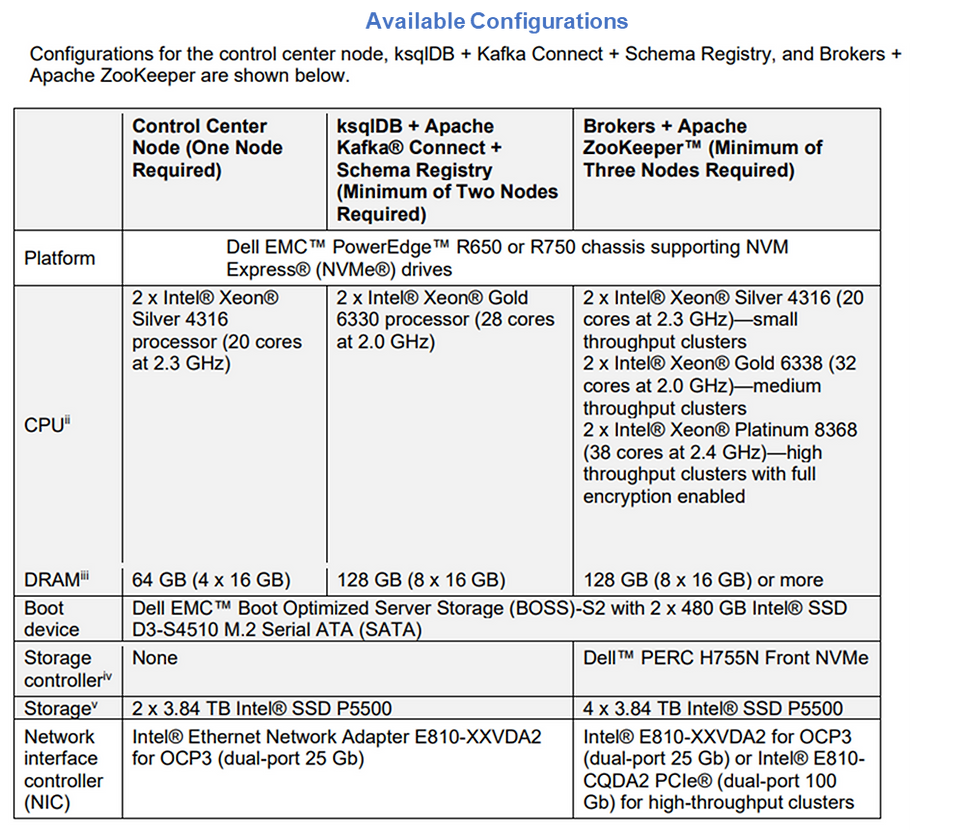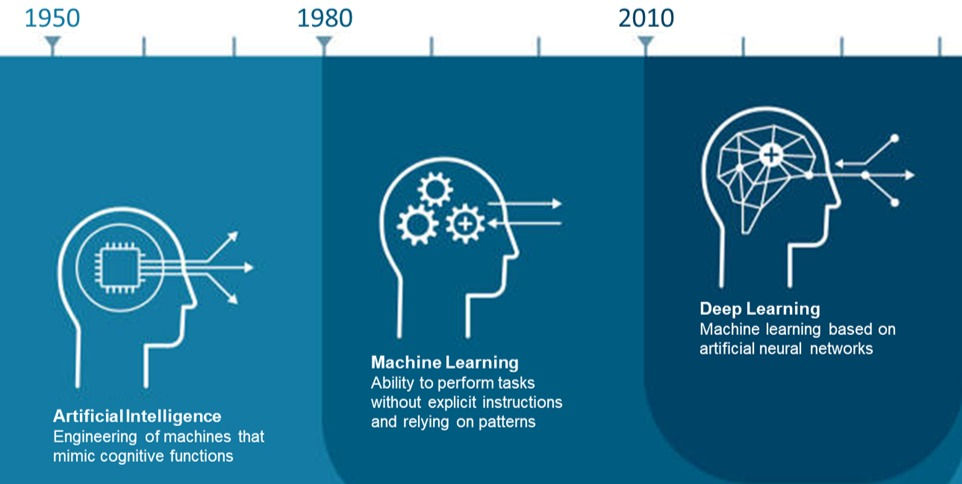PowerEdge Data Science: The Edge, AI & 5G
- Nomuka Luehr

- Mar 31, 2022
- 5 min read
Inspired by the pain of standing in long grocery checkout lines, David Humble invented the self-service till in 1984. As artificial intelligence (AI) research regained popularity in the 1980s, these basic tellers transformed into intelligent devices with AI-powered cameras that can analyze facial and hand expressions to detect misscanned items and theft.

At this rate of mainstream adoption of AI and other data science applications at edge locations like your local grocery store, one can only imagine the high-tech user experience awaiting future consumers. Whatever comes next, it’s no doubt that IT infrastructure will be critical to providing the necessary support to enable such developments. That’s why we wanted to explore these infrastructure technologies and their many applications across data analytics, AI, Machine Learning (ML), and Deep Learning (DL) through this new series.
To kick off the series, this blog will explore recent AI developments occurring at the edge, the role of 5G, and the benefits of deploying related workloads with PowerEdge.
The Edge, AI and 5G oh my!
Deploying AI at the edge brings a world of opportunities, especially with the arrival of 5G networks. With edge deployments of AI, you can get real-time actionable insights at the point of decision with lower cost and latency when compared to traditional data transfer architectures. Through 5G networks, service providers can gain insights faster via IoT devices, making consumer applications like real-time monitoring (like the self-checkout till from earlier) possible and more reliable.
Depending on the use case, AI is deployed on a broad range of smart devices like phones, drones, speakers, appliances, and industrial machines. The intelligence in these “edge” deployments usually resides on an edge server, not the smart device itself. Therefore, choosing the right servers for your specific edge deployment case is critical to maximizing performance. Beyond complex use cases like Augmented/Virtual Reality experiences, 5G will heavily impact enterprise use cases like self-service applications and dynamic warehouse inventory planning through capabilities like ubiquitous machine-to-machine connectivity and ultra-low-latency application execution. Ultimately, as AI and 5G technologies continue to mature and bring endless new opportunities, now is the perfect time to explore the edge.
PowerEdge Edge Essentials
Let’s explore how PowerEdge can help you leverage new data sources and achieve your unique edge and AI goals
Get the best of edge and cloud
While the increase of new distributed edge solutions is quickly rising, there are still IoT use cases that are best suited for cloud-centric and hybrid architectures. Therefore, most organizations will need a strategy that embraces different types of edge implementations and multiple cloud options to provide the best services at the lowest cost. As a leader in edge, cloud, and hybrid technologies, PowerEdge is well suited to provide a comprehensive, customized approach to help organizations thrive in this diverse market.
Access a broad portfolio of edge optimized servers
The PowerEdge portfolio includes multiple servers that are optimized for the edge. These servers are designed to bring Tier 1 data center features to your edge & telecom environments, additionally, full PowerEdge features built with a minimum footprint and full enterprise compute capabilities optimize valuable edge space and deliver a targeted virtual experience. These servers include:

Simple management for a diverse portfolio
The broad portfolio also comes with easy management tools to help deploy your server fleet and keep them secure. OpenManage Enterprise can be installed on the data center and can connect to edge devices using a WAN solution. OpenManage Enterprise can be used to discover and maintain server inventory, monitor the health of the server as well perform BIOS and firmware updates. Also, you can use the Integrated Remote Access Controller (iDRAC) for secure remote server management of the edge servers. In addition to using virtual media and console for deployment as explained earlier, iDRAC can also be used to update BIOS and firmware and monitor PowerEdge servers.
PowerEdge Edge Integrations
Beyond the essentials, PowerEdge has worked with a multitude of partner companies to bring an enhanced edge experience.
Easily Scale AI at the Edge with Nvidia Fleet Command
While the edge provides many opportunities, limited staffing and harsh environments can make it difficult to maintain AI deployments. To address this issue, Dell has partnered with NVIDIA to enable their Fleet Command deployments on compatible PowerEdge servers. NVIDIA Fleet Command is a hybrid cloud platform that enables admins to manage and scale AI deployments from dozens to million of servers and edge devices.
NVIDIA Fleet Command offers three key management benefits:
Manage edge systems in multiple locations with a single control plane—You can pair PowerEdge servers in multiple locations with Fleet Command, which allows you to deploy a complete operating environment and application software stack on those servers.
Deploy applications from private or public catalogs—Fleet Command allows you to deploy applications from the public NGC catalog and from your NGC Private Registry to the edge systems.
Connect safely to systems with remote management—You can track system status to ensure that systems are ready to run applications.
If you’re interested in powering your edge with PowerEdge and the NVIDIA Fleet Command, you have access to a wide selection of servers that are qualified by Dell through NVIDIA Certified Systems and NGC Ready Systems validation programs. Beyond the edge optimized servers we saw earlier (R650, R750, XE2420, XR2, XR11 and XR12), you can choose from the following additional servers to be a part of your NVIDIA fleet command deployment: R650, R750xa, R6515, R6525, R7525, R940xa, DSS 8440, XE2420, R640, R740 and R740xd servers.

Take HCI to the edge with VxRail
Operating at the edge, in space constrained, remote, and sometimes harsh environments, without compromising functionality or performance comes with many challenges. In these remote locations, systems must be especially easy to operate, manage, and update. Hyperconverged Infrastructure (HCI) offers integrated server & storage technology and provides full lifecycle management and data protection at the edge, thereby replicating the operational efficiency of a traditional data center. The new Dell EMC VxRail D Series is the first and only ruggedized HCI appliance developed with and optimized for VMware environments. The solution delivers a simple, agile, and, more importantly, a familiar user experience that integrates seamlessly with existing VMware infrastructure. Users can manage traditional and cloud-native applications across a consistent infrastructure.

Centralize data with the Confluent platform
The Confluent Platform enables data science and IT practitioners to collaborate on building real-time data pipelines and streaming applications by integrating data from multiple sources and locations into a single, central event streaming platform. Confluent simplifies connecting data sources to Kafka, building applications with Kafka services, and securing, monitoring, and managing Kafka infrastructure. Sample configurations for PowerEdge server deployments ensure your Confluent Kafka architecture is robust and takes advantage of the most recent advancements in server technology. These include:

Want to know more?
As we briefly explored, PowerEdge is well equipped to take your AI workloads to the edge. To learn more, check out the following resources:
Thank you for reading and stay tuned for more on the PowerEdge Data Science series!



Comments